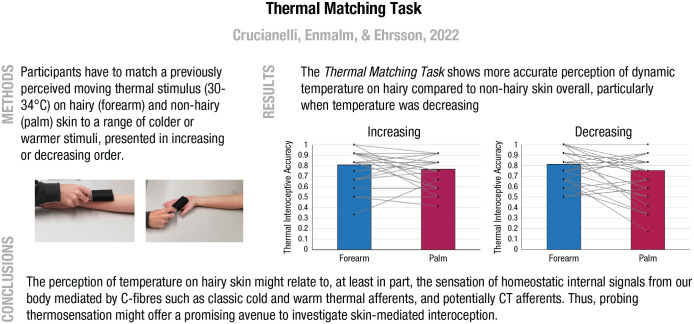Fig. 2.
Summary of the methods, results, and conclusions of the thermal matching task, fully described in Crucianelli et al. (2022). In line with classic approaches in the cardiac interoceptive field (e.g., Schandry, 1981), we applied a formula that allowed us to conveniently obtain a number between 0 and 1, where 0 indicates lower ability to detect changes from thermoneutrality (worst performance at the task) and 1 indicates higher such ability (better performance at the task). This index of thermal interoceptive ability can then be compared with similar indexes calculated for other interoceptive tasks in a “battery” of tests to probe different interoceptive submodalities.

